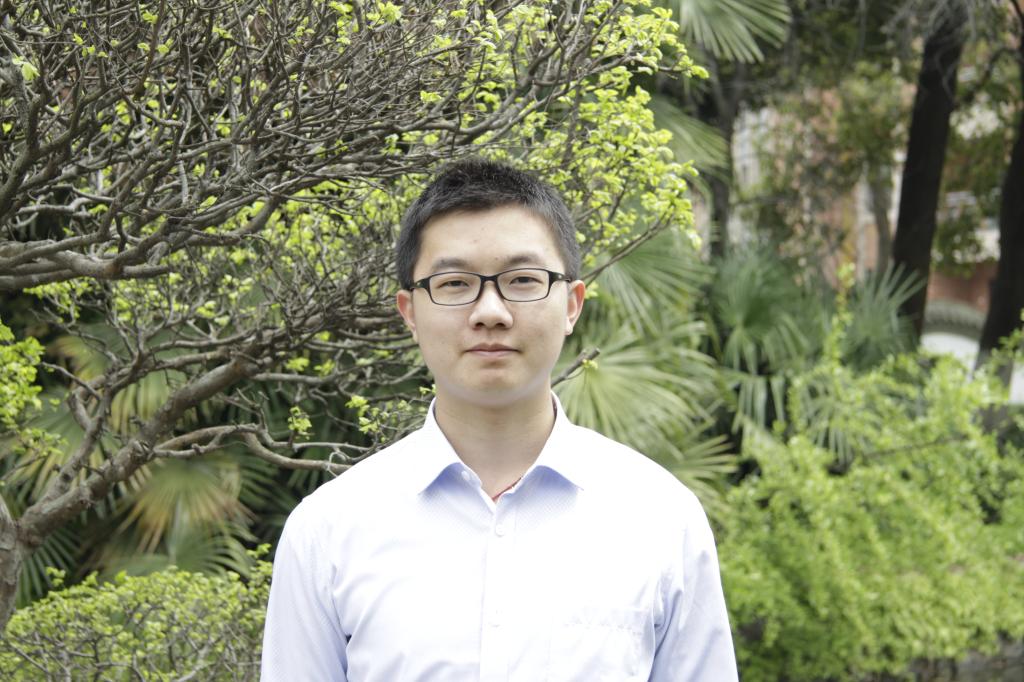上官明佳博士于2019年加盟91看自拍海洋与地球学院,为应用海洋物理系副教授(特任研究员),现为91看自拍的固定成员。上官博士于2017年获中国科大合肥微尺度物质科学国家实验室量子信息物理学博士学位,开展单光子探测激光雷达研究;2018年任国耀量子雷达科技有限公司光学总工程师,从事激光雷达的产业化;自2019年开始,针对超导技术,开发气体成分探测激光雷达。

激光雷达技术是主动的现代光学遥感技术,是传统雷达技术与现代激光技术相结合的产物。继微波雷达之后,激光雷达将辐射源的频率提高到了光频率,比毫米波高出四个数量级,这使之能够探测微小自然目标,包括海洋中的水分子、溶解有机物和颗粒物,以及大气中的气溶胶和分子。上官博士的研究方向为激光遥感,针对海洋和大气研究、国防、环保、气象和地理测绘等重大需求,研发先进的激光雷达,以开展海洋和大气的物理/化学/生物特性研究。
上官博士目前研制及参与研制了多类不同的激光雷达系统,包括被世界气象组织认为最具挑战性之一的测风激光雷达,实现了跨区域(青海、大连、安庆和合肥)、大尺度(0~100千米高度)、复杂平台(地基、车载和船载)的大气参数(风场、温度、大气退偏振、云、能见度、PM2.5、痕量气体成分CO2等)遥感探测,推动了激光雷达在临近空间、船载作业、大气污染检测和预报等上的应用。
随着量子、超导、微波光子学的发展,激光雷达也朝着小型化、集成化和多功能方向发展。2017年,上官博士以第一作者在Optics Letters报道了超导双频测风激光雷达,实现了最优距离分辨率,该工作被美国光学学会(OSA)和科学促进会(AAAS)专题报道,称“最精简的光学结构,使得整个系统具有足够的可靠性和稳定性,适合在恶劣的环境下(机载、星载)运行”。
而基于量子上转换的激光雷达将探测性能提升两个数量级,开创了激光雷达探测新体制,实现激光雷达小型化和集成化,被欧美俄20多家单位应用和效仿,并在第45届日内瓦国际发明展上获特等金奖。
上官博士自加入91看自拍以来,研究方向从大气激光遥感拓展到了海洋激光雷达探测。所在的光学海洋学遥感实验室,具备了海洋生地化参数主被动融合遥感的能力。
如有兴趣了解上官明佳博士的更多情况,欢迎访问其个人主页http://mel2.xmu.edu.cn/faculty/MingjiaShangguan/或联系mingjia@xmu.edu.cn。
Dr. Mingjia Shangguan joined Xiamen University’s College of Ocean and Earth Science in 2019 and has been a faculty member of the State Key Laboratory of Marine Environmental Science since then. He is now an associate professor in applied oceanic physics. He received his Ph.D. in quantum information in 2017 from the University of Science and Technology of China. In 2017 and 2018, he worked as a deputy chief engineer in Glory China Quantum Lidar Ltd. After achieving some breakthroughs, including the development of a single-photon lidar to monitor the city’s air pollution and wind field, he started to develop a gas mapping lidar by adopting superconducting nanowire single-photon technology in 2019.
Lidar is an active remote sensing system. Since the wavelength of the laser is shorter than the millimeter wave by four orders of magnitude, lidar can detect very fine particulates, such as aerosols and molecules in the atmosphere, as well as water molecules and particles in the ocean. Dr. Shangguan’s research focuses specifically on advanced lidar technologies for urgent needs in the area of scientific and meteorological research, and geographic mapping.
Dr. Shangguan has already developed nine types of lidar systems with diverse functions, including a direct-detection Doppler wind lidar that is regarded as a most potential approach to obtain the global wind data. By employing different platforms, lidar can detect oceanic and atmospheric parameters with different spatiotemporal resolutions. Those parameters include wind, aerosol density, temperature, depolarization ratio, cloud, visibility, PM 2.5, and the concentration of atmospheric gas.
With the development of single photon technologies, especially in superconducting technologies and microwave photonics, developing a compact multifunction lidar is possible and critical. Dr. Shangguan developed a dual-frequency wind lidar equipped with a superconducting nanowire single-photon detector, which realized the highest spatial resolution of 10 m in 2017. This work has been reported and complimented on by the Optical Society of America (OSA) and American Association for the Advancement Science (AAAS), which reported that “it features a greatly simplified optical setup that makes it robust and stable enough to use in harsh environments such as aboard aircraft or satellites”. Furthermore, the novel upconversion wind lidar improves the performance of wind detection by two orders of magnitude compared to the traditional lidar system. As it is compact and lightweight, upconversion lidar can be installed on a UAV platform for wide applications. This work has been followed by more than 20 institutes globally, including NASA, ESA, and Danmarks Tekniske Universitet.
Dr. Shangguan now extends his research interest from atmospheric science to oceanic science. His oceanic optics lab is dedicated to developing advanced lidar for the detection of marine biogeochemical parameters.
For more information please visit Dr. Shanggguan’s webpage: http://mel2.xmu.edu.cn/faculty/MingjiaShangguan/.